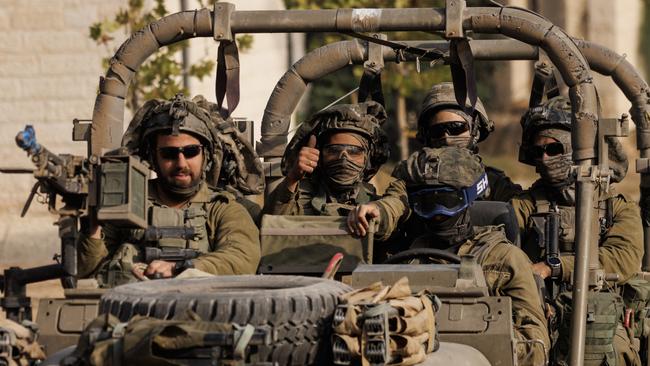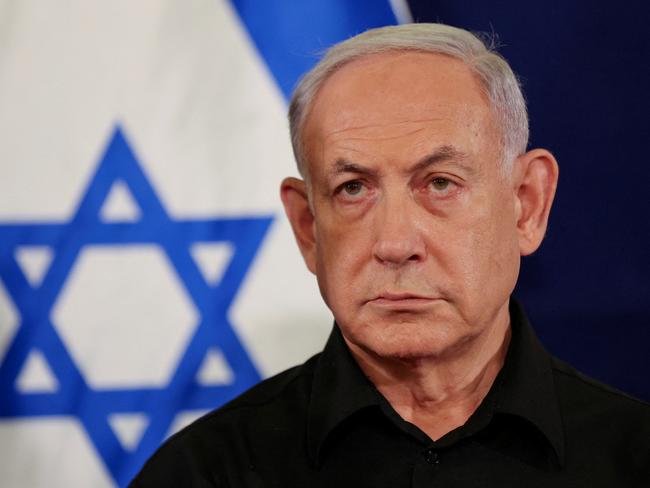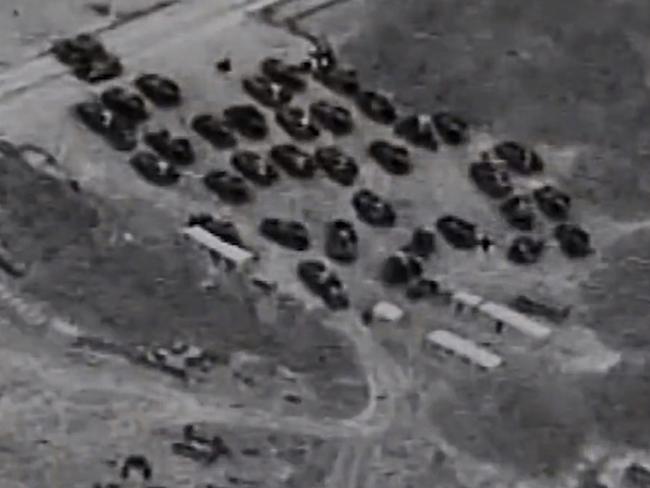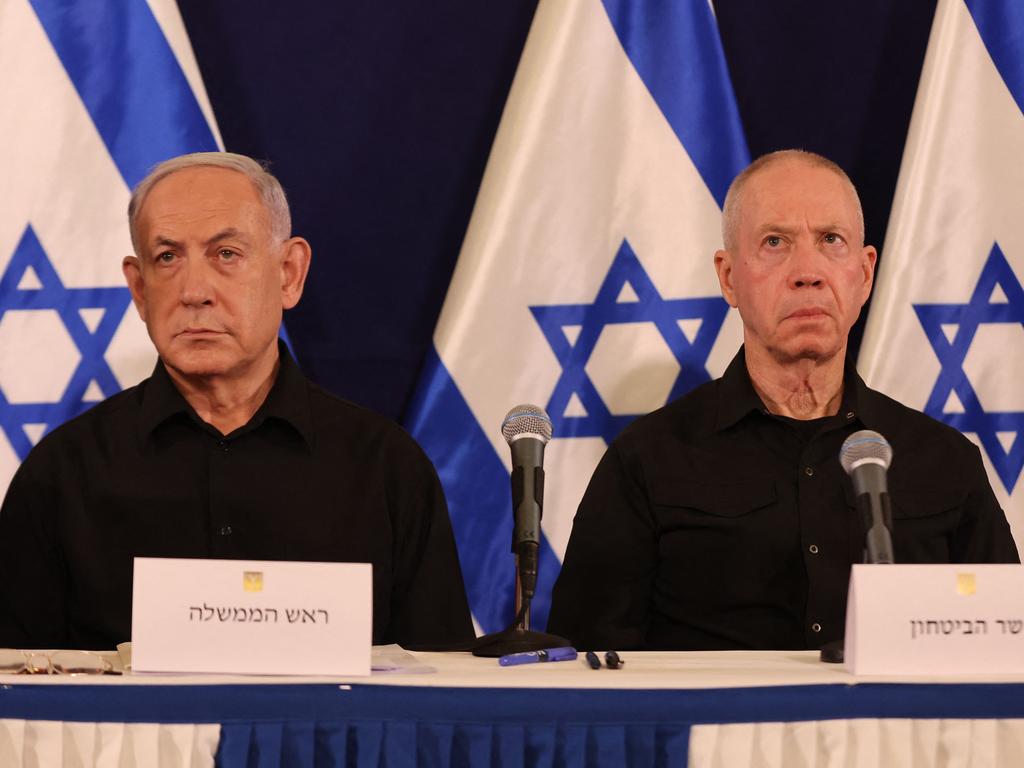Blackouts, bombs and tanks as Israeli forces move into Gaza to destroy Hamas
Declaring that Israel is fighting its second war of independence, Benjamin Netanyahu has launched his high-risk ground offensive into Gaza to destroy Hamas.

Declaring that Israel is fighting its second war of independence, Benjamin Netanyahu appears to have launched his long-awaited and high-risk ground offensive into Gaza to destroy Hamas, sending tensions soaring across the Middle East.
The military advance saw Israeli soldiers engage in direct combat with Hamas militants in the narrow alleyways of the besieged territory in “the second stage of the war”, which is expected to be a slow and bloody struggle as Israel carries out its vow to destroy the terror group.
“The war inside Gaza is going to be long. This is our second independence war. We’re going to save our country,” Mr Netanyahu said. “Our heroic fighters have one goal: To destroy this enemy and to make sure the existence of our country. Never again. ‘Never again,’ is now,” he said. “For now, my supreme mission is to save the country and lead our soldiers to total victory.”
The country’s Defence Minister, Yoav Gallant, said Israel “attacked above ground and below ground. We attacked terrorist operatives at all levels, in all places. The instructions to our forces are clear: the operation will continue until a new order is given.”

On Sunday, the Israel Defence Forces said its fighter jets had struck more than 450 Hamas targets, including operational command centres, observation posts and missile launch stations.
Announcing its first military injuries since the start of the incursion, the IDF said one soldier was severely wounded when struck by a mortar shell in the northern Gaza Strip, with a second soldier “moderately injured” while engaging with terrorists in the same area.
The military also released evidence supporting its assertion that Hamas is housing its central command centres beneath civilian infrastructure, including the largest hospital in Gaza.
While yet to launch a strike on the hospital, an IDF spokesman wouldn’t rule it out.
The IDF said it “went into the Gaza Strip and expanded the ground operation where infantry, armour and engineer units and artillery with heavy fire are taking part. The forces are in the field and continue the fighting.”
Hamas’s armed wing also confirmed that its forces were fighting with Israeli soldiers inside Gaza.
But Israel said the ground incursion was an expansion of its war and avoided calling it an invasion.
Inside Israel, security measures were increased, with civilians advised to stay at home or to only visit locations within 60 seconds of a safe room. This followed numerous rocket attacks over the weekend on heavily populated regions of the country, including Tel Aviv.
The size of the Gaza initial offensive was smaller than expected, raising speculation that the US had persuaded Israeli to adopt a narrower and more targeted offensive to minimise civilian casualties and maximise the chances of securing the release of some of the 224 Israeli hostages held by Hamas. However, some experts believe that Israel is planning to build up the size of its forces as soon as it gains its first military foothold in the dense urban battlefield of northern Gaza.

The apparently permanent presence of the Israeli military inside Gaza followed two targeted raids last week in which soldiers and tanks entered northern Gaza but departed several hours later.
For the beginning of the ground offensive Gaza was cut off from all internet and phone connections, making it difficult to gauge how far Israeli troops had gone into the besieged territory or what resistance they were facing.
Before their entry into Gaza, Israeli forces conducted the most severe and sustained bombardment of the territory since the October 7 attacks by Hamas on Israel. The Israeli military was “gradually increasing its ground activity in the Gaza Strip and the scale of its forces,” a military spokesman, Daniel Hagari, said. “It will take time, and we will adapt ourselves to developing events and carry out the war aims.”
Experts said the next 48 hours would be critical to see if the ground offensive into Gaza leads to more aggressive attacks on both Israeli and US forces in the region by Iran-backed terror groups.
The entry of Israeli forces into Gaza was followed by clashes between Iran-backed Hezbollah fighters and Israeli forces in South Lebanon. Israeli forces made their deepest strike yet into Lebanese territory with a drone hitting targets 20km across the border.
Israel has said it does not want a war with Hezbollah, but Mr Netanyahu said if there was a war it would result in “devastating consequences to Hezbollah and the state of Lebanon”.
The communication and power blackout in Gaza caused more chaos inside the territory, which is already suffering from a dangerous shortage of food, water, fuel and medicine.
Major international aid groups, including the World Health Organisation and UNICEF, said they had lost contact with their members inside the Gaza Strip with WHO director general Tedros Adhanom Ghebreyesus saying the blackouts had made it “impossible” for ambulances to reach the injured.





To join the conversation, please log in. Don't have an account? Register
Join the conversation, you are commenting as Logout